Senescence Defines a Distinct Subset of Myofibroblasts That Orchestrates Immunosuppression in Pancreatic Cancer
- PMID: 38683144
- PMCID: PMC12155422
- DOI: 10.1158/2159-8290.CD-23-0428
Senescence Defines a Distinct Subset of Myofibroblasts That Orchestrates Immunosuppression in Pancreatic Cancer
Abstract
Pancreatic ductal adenocarcinoma (PDAC) therapeutic resistance is largely attributed to a unique tumor microenvironment embedded with an abundance of cancer-associated fibroblasts (CAF). Distinct CAF populations were recently identified, but the phenotypic drivers and specific impact of CAF heterogeneity remain unclear. In this study, we identify a subpopulation of senescent myofibroblastic CAFs (SenCAF) in mouse and human PDAC. These SenCAFs are a phenotypically distinct subset of myofibroblastic CAFs that localize near tumor ducts and accumulate with PDAC progression. To assess the impact of endogenous SenCAFs in PDAC, we used an LSL-KRASG12D;p53flox;p48-CRE;INK-ATTAC (KPPC-IA) mouse model of spontaneous PDAC with inducible senescent cell depletion. Depletion of senescent stromal cells in genetic and pharmacologic PDAC models relieved immune suppression by macrophages, delayed tumor progression, and increased responsiveness to chemotherapy. Collectively, our findings demonstrate that SenCAFs promote PDAC progression and immune cell dysfunction. Significance: CAF heterogeneity in PDAC remains poorly understood. In this study, we identify a novel subpopulation of senescent CAFs that promotes PDAC progression and immunosuppression. Targeting CAF senescence in combination therapies could increase tumor vulnerability to chemo or immunotherapy. See related article by Ye et al., p. 1302.
©2024 American Association for Cancer Research.
Conflict of interest statement
Figures

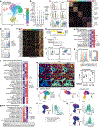

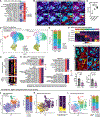
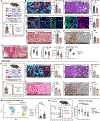
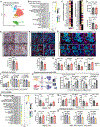
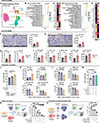
References
MeSH terms
Grants and funding
- U54AG075934/National Institutes of Health (NIH)
- U01 CA284086/CA/NCI NIH HHS/United States
- U54 AG075934/AG/NIA NIH HHS/United States
- R01CA273190/National Institutes of Health (NIH)
- Foundation for Barnes-Jewish Hospital (FBJH)
- R01 CA286615/CA/NCI NIH HHS/United States
- P30 CA091842/CA/NCI NIH HHS/United States
- P50 CA196510/CA/NCI NIH HHS/United States
- U54 CA274318/CA/NCI NIH HHS/United States
- P50 CA272213/CA/NCI NIH HHS/United States
- K12 CA167540/CA/NCI NIH HHS/United States
- F31 DK122633/DK/NIDDK NIH HHS/United States
- BC181712/DOD Breast Cancer Research Program
- Canadian Institutes of Health Research (CIHR)
- U54CA268069/National Institutes of Health (NIH)
- R01 CA262506/CA/NCI NIH HHS/United States
- F31DK122633/National Institutes of Health (NIH)
- R01 CA248917/CA/NCI NIH HHS/United States
- P01 CA254849/CA/NCI NIH HHS/United States
- F30 CA243233/CA/NCI NIH HHS/United States
- R01 CA177670/CA/NCI NIH HHS/United States
- UL1 TR002345/TR/NCATS NIH HHS/United States
- U54 CA268069/CA/NCI NIH HHS/United States
- F30CA243233/National Cancer Institute (NCI)
- 5T32EB021955/National Institutes of Health (NIH)
- T32 EB021955/EB/NIBIB NIH HHS/United States
LinkOut - more resources
Full Text Sources
Medical
Molecular Biology Databases

